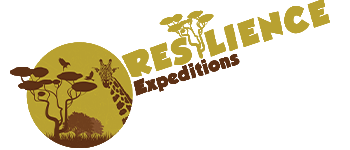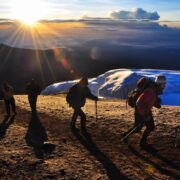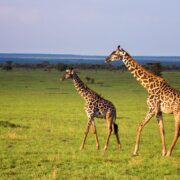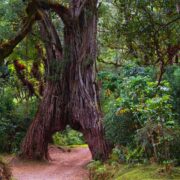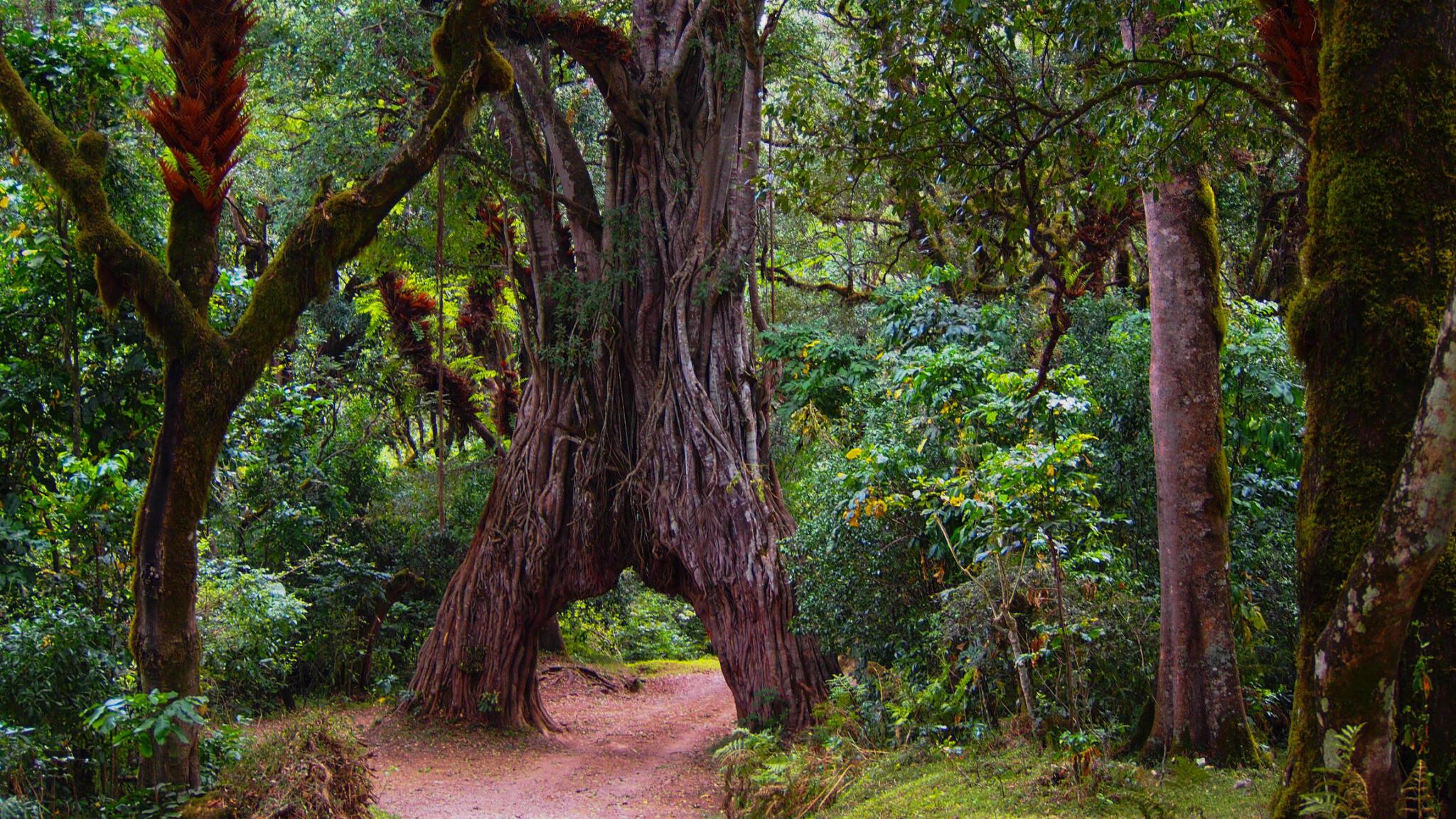
Exploring the Cultural Heritage and Wildlife of Mount Meru: A Journey into Tanzania’s Rich Tapestry
Nestled within the heart of Tanzania’s Arusha National Park lies a hidden gem waiting to be discovered – Mount Meru. This towering volcano, standing at 14,977 feet, not only boasts breathtaking landscapes and diverse wildlife but also holds profound cultural significance for the indigenous tribes of the region. Embark on a journey with us as we delve into the captivating world of Mount Meru, where wildlife encounters, natural wonders, and centuries-old traditions intertwine to create a truly immersive experience. Join us as we uncover the secrets of Mount Meru’s rich tapestry, where every step reveals a new story waiting to be told.
1. Wildlife Encounters
Mount Meru is home to a remarkable diversity of wildlife species, each adapted to thrive in its unique ecosystem. As you explore the slopes and valleys of the mountain, you’ll have the opportunity to encounter some of Africa’s most iconic animals in their natural habitat.
Giraffes: Keep your eyes peeled for the graceful giraffes that roam the savannahs surrounding Mount Meru. With their elegant necks and distinctive coat patterns, these majestic creatures are a true symbol of Africa’s wilderness.
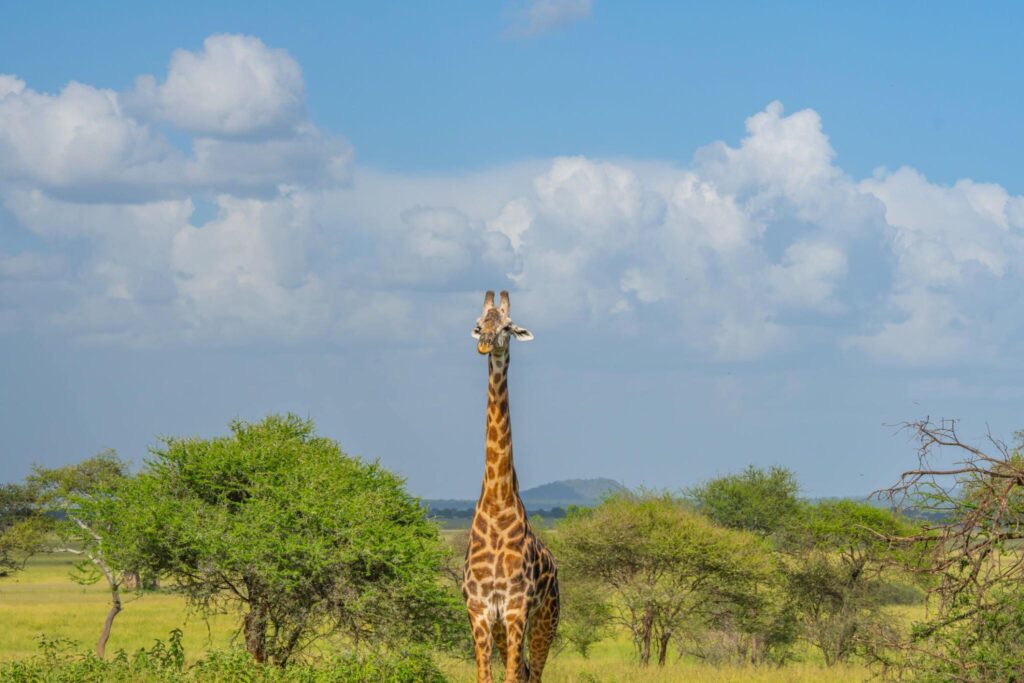
Leopards: While elusive and seldom seen, leopards are known to inhabit the dense forests and rocky outcrops of Mount Meru. Their stealth and camouflage make them masters of disguise, blending seamlessly into their surroundings as they stalk their prey.
Birdlife: Mount Meru is a paradise for birdwatchers, with over 400 species of birds recorded in the area. From colorful kingfishers and majestic eagles to elusive hornbills and vibrant sunbirds, the skies and treetops are alive with the sounds and colors of avian life.
Conservation Efforts: Despite the abundance of wildlife, Mount Meru faces conservation challenges due to habitat loss, poaching, and human-wildlife conflict. However, dedicated conservation organizations and local communities are working tirelessly to protect the area’s biodiversity and ensure a sustainable future for its wildlife.
Guided Wildlife Safaris: For an unforgettable wildlife experience, consider joining a guided wildlife safari led by experienced local guides. These excursions offer the chance to observe and learn about Mount Meru’s wildlife while contributing to conservation efforts through eco-tourism.
2. Natural Wonders
Mount Meru’s landscapes are as diverse as they are stunning, offering visitors a feast for the senses at every turn. From lush forests and rolling savannahs to rugged mountain peaks and volcanic craters, the natural wonders of Mount Meru are a sight to behold.
Momella Lakes: Nestled at the base of Mount Meru, the Momella Lakes are a series of shallow alkaline lakes that shimmer with hues of blue, green, and pink. These picturesque lakes provide a vital habitat for a variety of bird species, including flamingos, herons, and pelicans.
Ngurdoto Crater: Formed by volcanic activity thousands of years ago, the Ngurdoto Crater is a natural amphitheater surrounded by steep cliffs and dense forest. The crater floor is home to a lush and diverse ecosystem, with waterfalls, streams, and abundant wildlife.
Slopes of Mount Meru: Ascend the slopes of Mount Meru and be rewarded with breathtaking views of the surrounding landscape. The trail winds through dense forests, alpine meadows, and rocky outcrops, offering glimpses of wildlife and sweeping panoramas at every turn.
Volcanic Features: Mount Meru itself is a dormant volcano, characterized by its distinctive cone-shaped peak and rugged terrain. Along the trail, hikers can marvel at the remnants of past eruptions, including lava flows, ash cones, and volcanic boulders.
Photography Opportunities: Whether you’re a seasoned photographer or simply appreciate the beauty of nature, Mount Meru offers endless opportunities for capturing stunning photographs. From dramatic sunrises and sunsets to close-up shots of wildlife and landscapes, every moment is a photo-worthy moment on Mount Meru.
3. Cultural Heritage
Mount Meru is not only a natural wonderland but also a cultural treasure trove, steeped in centuries-old traditions and customs. The indigenous tribes of the region, including the Maasai and Arusha people, have long inhabited the area, leaving their mark on the landscape and shaping its cultural identity.
Indigenous Tribes: The Maasai and Arusha people are the primary indigenous tribes residing in the vicinity of Mount Meru. These tribes have rich cultural traditions and a deep connection to the land, which is reflected in their language, art, music, and ceremonies.
Spiritual Significance: Mount Meru holds great spiritual significance for the local communities, who consider it to be a sacred mountain imbued with divine energy. According to Maasai folklore, Mount Meru is the abode of the gods and the center of the universe, from which all life emanates.
Traditional Festivals: Throughout the year, the indigenous tribes of Mount Meru celebrate traditional festivals and ceremonies that honor their ancestors, gods, and the natural world. These festivals often feature music, dance, storytelling, and rituals passed down through generations.
Cultural Practices: From pastoralism and agriculture to beadwork and body adornment, the cultural practices of the indigenous tribes reflect their close relationship with the land and its resources. Visitors to Mount Meru can immerse themselves in these traditions through cultural tours, homestay experiences, and interactions with local communities.
Preservation Efforts: Efforts are underway to preserve and promote the cultural heritage of Mount Meru, including initiatives to document oral histories, revitalize traditional arts and crafts, and support indigenous-led conservation projects. By celebrating and respecting the cultural heritage of Mount Meru, we honor the legacy of its indigenous peoples and ensure its preservation for future generations.
4. Traditional Practices
The indigenous tribes of Mount Meru have cultivated a deep understanding of their environment and developed traditional practices that enable them to thrive sustainably within it.
Pastoralism: The Maasai people are renowned for their nomadic lifestyle centered around pastoralism. For generations, they have herded cattle across vast expanses of land, following seasonal patterns of rainfall and vegetation growth. This cyclical movement not only ensures the well-being of their livestock but also allows grazing areas to regenerate naturally. Through their intimate knowledge of the land, the Maasai have established intricate systems of communal land management, where decisions about grazing rights and resource allocation are made collectively by the community. This traditional approach to pastoralism promotes biodiversity and resilience, as different areas of land are rested and rejuvenated in turn.
Agroforestry: The Arusha people have mastered the art of agroforestry, a sustainable farming technique that integrates trees and crops to maximize productivity while conserving natural resources. In the fertile foothills of Mount Meru, Arusha farmers cultivate a diverse range of crops, including maize, beans, and coffee, interspersed with fruit and nut trees. These trees provide shade, prevent soil erosion, and enrich the soil with organic matter, resulting in higher yields and healthier ecosystems. By mimicking the structure and function of natural forests, agroforestry systems support a rich array of wildlife, from pollinators and insect predators to birds and small mammals, creating vibrant agro ecosystems that benefit both people and nature.
Ethical Hunting: Hunting and gathering have been integral parts of indigenous cultures for millennia, guided by strict taboos, rituals, and traditional knowledge systems. Among the Maasai and other tribes of Mount Meru, hunting is governed by customary laws that dictate which species can be hunted, when and where hunting can take place, and how animals are used and distributed within the community. These rules ensure the sustainable use of wildlife resources, preventing overexploitation and promoting the conservation of endangered species. Hunters are trained from a young age in the art of tracking, stalking, and dispatching prey with minimal suffering, honing their skills through years of practice and observation of animal behavior. This deep respect for wildlife and the natural world is ingrained in the cultural fabric of indigenous communities, shaping their interactions with the environment and fostering a sense of stewardship for future generations.
Community Conservation: Indigenous communities play a pivotal role in conserving Mount Meru’s biodiversity through community-based conservation initiatives. These efforts are rooted in the traditional principles of collective stewardship and shared responsibility for the land. Local residents actively participate in wildlife monitoring, habitat restoration, and anti-poaching patrols, working hand in hand with conservation organizations and government agencies to protect the area’s natural heritage. By engaging with indigenous knowledge systems and building partnerships based on mutual respect and trust, community conservation initiatives empower local communities to safeguard their ancestral lands and preserve their way of life for generations to come.
Interconnectedness with Nature: At the heart of traditional practices lies a profound reverence for nature and an understanding of humanity’s interconnectedness with the natural world. Indigenous cultures view the land not as a commodity to be exploited but as a sacred gift entrusted to their care. This holistic worldview recognizes the inherent value of all living beings and emphasizes the importance of maintaining balance and harmony in the ecosystem. Through rituals, ceremonies, and daily interactions with the land, indigenous communities express gratitude for the bounty of nature and reaffirm their commitment to living in harmony with the earth. This deep connection to the land serves as a guiding principle for sustainable living and environmental stewardship, inspiring people of all backgrounds to reevaluate their relationship with the natural world and embrace a more harmonious way of life.
5. Immersive Experiences
Exploring Mount Meru offers travelers a wealth of immersive experiences that go beyond typical tourist activities. Whether you’re interested in nature, culture, or community engagement, there’s something for everyone to enjoy and learn from.
Guided Nature Walks: Dive deep into Mount Meru’s natural beauty with guided nature walks led by experienced local guides. Traverse lush forests teeming with life, wander through open savannahs dotted with acacia trees, and ascend to scenic viewpoints for panoramic vistas of the surrounding landscape. Along the way, your guide will share fascinating insights into the diverse flora and fauna of the region, pointing out unique plant species, animal tracks, and bird calls. Keep your camera ready for unexpected wildlife encounters, from grazing antelopes to colorful bird species flitting among the trees.
Cultural Tours: Immerse yourself in the vibrant cultures of the Maasai and Arusha people with immersive cultural tours of nearby villages. Step into traditional homesteads known as bomas, where you’ll be welcomed with open arms by local families eager to share their way of life. Learn about age-old customs and traditions, such as beadwork, warrior dances, and storytelling sessions around the fire. Engage with skilled artisans as they demonstrate traditional crafts like bead making, pottery, and weaving, and perhaps even try your hand at creating your own masterpiece to take home as a souvenir of your time in Mount Meru.
Homestay Experiences: For a truly authentic cultural immersion, opt for a homestay experience with a local family in one of the surrounding villages. Spend your days participating in daily activities such as tending to livestock, cultivating crops in the fields, and cooking traditional meals using fresh, locally sourced ingredients. Share stories and laughter with your hosts as you break bread together and learn about their customs, beliefs, and daily routines. By living among the local community, you’ll gain a deeper understanding of their way of life and forge lifelong connections that transcend cultural boundaries.
Wildlife Safaris: Embark on thrilling wildlife safaris through Arusha National Park, where you’ll have the chance to encounter some of Mount Meru’s most iconic inhabitants up close. Set out in open-top safari vehicles with expert guides who know the park like the back of their hand, navigating the terrain with ease in search of elusive leopards, playful monkeys, and graceful giraffes. Marvel at the sight of herds of buffalo grazing on the savannah, spot colorful bird species flitting among the trees, and keep your eyes peeled for the distinctive silhouette of Mount Meru looming in the distance. With each safari outing, you’ll gain a deeper appreciation for the interconnectedness of life in this biodiverse ecosystem.
Community-Based Initiatives: Get involved in community-based initiatives that support conservation efforts and sustainable development in the Mount Meru area. Join local conservation groups on tree planting expeditions, helping to restore degraded habitats and create corridors for wildlife movement. Participate in wildlife monitoring patrols alongside park rangers, collecting data on animal populations and illegal activities to support conservation efforts. Engage with community members through environmental education programs aimed at raising awareness about the importance of protecting Mount Meru’s natural and cultural heritage. By actively participating in these initiatives, you’ll not only make a positive impact on the environment but also gain a deeper appreciation for the interconnectedness of nature and community.
Responsible Tourism Practices: As you partake in immersive experiences on Mount Meru, it’s important to practice responsible tourism to minimize your environmental impact and respect the rights and traditions of local communities. Choose eco-friendly accommodations that prioritize sustainability and support local businesses that uphold ethical practices. Follow Leave No Trace principles during outdoor activities, disposing of waste properly and minimizing your footprint on the land. Respect wildlife by observing from a safe distance and avoiding actions that may disrupt their natural behavior. By traveling responsibly, you can help preserve the beauty and integrity of Mount Meru for future generations to enjoy.
Conclusion: Mount Meru stands as a majestic testament to the awe-inspiring wonders of our planet, beckoning adventurers with promises of unparalleled beauty and boundless discovery. From its soaring peaks cloaked in snow to its verdant forests teeming with life, Mount Meru invites you to embark on a journey of unparalleled exploration and exhilarating encounters. Whether you’re drawn to its lofty summit, where the air crackles with the promise of triumph, or its untamed wilderness, where every step reveals a new marvel, Mount Meru promises an adventure like no other. So, heed the call of the wild, and let Mount Meru be your guide to a world of wonder and enchantment. As you traverse its rugged terrain, immerse yourself in its rich tapestry of cultures, and marvel at its diverse array of wildlife, you’ll discover that Mount Meru is not just a mountain—it’s a symphony of sights, sounds, and sensations that will leave an indelible mark on your soul. Embrace the challenge, seize the moment, and let Mount Meru ignite your spirit of adventure and awaken your sense of wonder. Your journey awaits—come and conquer Mount Meru, and let its magnificence inspire you to reach new heights of exploration and self-discovery.
